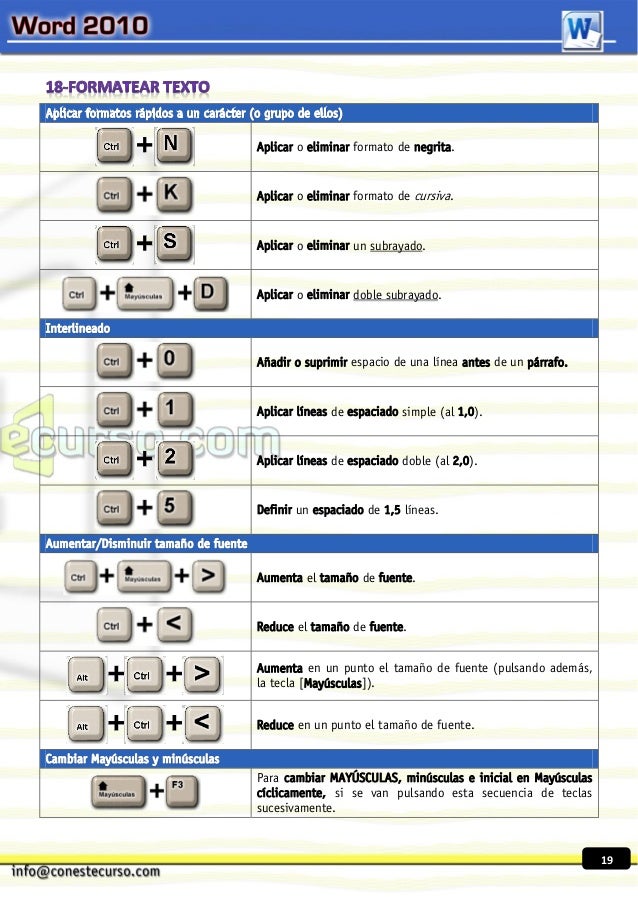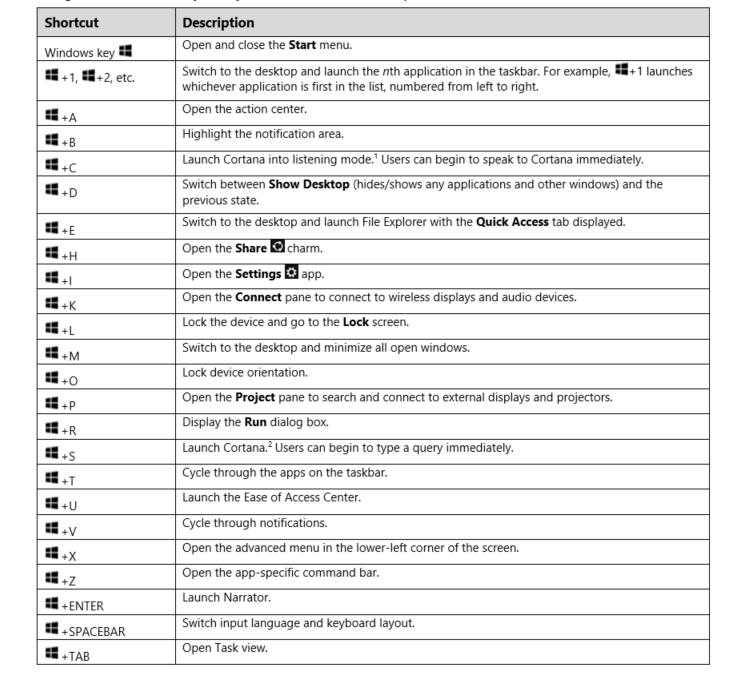

- ATAJOS TECLADO EXCEL PDF FOR WINDOWS 10
- ATAJOS TECLADO EXCEL PDF SOFTWARE
- ATAJOS TECLADO EXCEL PDF PASSWORD
- ATAJOS TECLADO EXCEL PDF DOWNLOAD
This will allow you to run AutoHotkey scripts by double ahk file, then when asked, choose to browse what application should be used to open such files.ĪutoHotkeyU64. Once you’ve downloaded it, extract the file toĪ memorable location.
ATAJOS TECLADO EXCEL PDF DOWNLOAD
You can download Autohotkey from their website for free.
ATAJOS TECLADO EXCEL PDF SOFTWARE
This software can be used to automate a large number of different tasks.
ATAJOS TECLADO EXCEL PDF FOR WINDOWS 10
Use Autohotkey for EmojisĪutoHotkey is another application for Windows 10 that can help you to create more complex keyboard shortcuts.

With that file type would then also work. To choose a default application for that file type, and then future hotkeys If a file didn’t work, Windows 10 will ask you From my testing, I could get Photoshop, office apps If you choose the open document option, mostĭocuments will work, so long as you have a supporting application defaulted to This time though, you’ll need to browse to a You can simply select the Open a Document or Open a Folder options under the I want WinHotKey to: dropdown box and then follow the same steps as above. Many of these commands may be combined with ⇧ Shift to select a region of text.WinHotKey can also be used to quickly open specific folders and documents within Windows 10. GNOME Ĭtrl+ ⇧ Shift+ Show Windows then select the Screen Record button on the toolbar ⇧ Shift+ Print Screen click "Copy to Clipboard". GNOME Ĭtrl+ ⇧ Shift+ Show Windows then click+drag mouse over required areaĬopy screenshot of arbitrary area to clipboard (Snip)Ĭtrl+ ⇧ Shift+ ⌘ Cmd+ 4 then click+drag mouse over required area ⇧ Shift+ Print Screen set the name and click "Save". ⇧ Shift+ ⌘ Cmd+ 4 then click+drag mouse over required area Save screenshot of arbitrary area as file GNOME Ĭtrl+ Alt+ Show Windows then move mouse and clickĬtrl+ ⇧ Shift+ ⌘ Cmd+ 4 then Space then move mouse and clickĪlt+ Print Screen click "Copy to Clipboard". ⇧ Shift+ ⌘ Cmd+ 4 then Space then move mouse and clickĪlt+ Print Screen set the name and click "Save". (KDE no confirmation, restart is immediate)Ĭopy screenshot of entire screen to clipboardĬopy screenshot of active window to clipboard (KDE no confirmation, shutdown is immediate) (GNOME there is no default shortcut) Ĭtrl+ ⌘ Cmd+ Eject or Ctrl+ ⌘ Cmd+ Power Sleep (available on some keyboards, configurable in Control Panel ➢ Power Options ➢ Advanced tab dialog box) ⌘ Cmd+ Space, enter executable name or ⌘ Cmd+ ↓Īlt+ V, then H, then H again, while in File Explorer, will toggle setting Switch window without dialog (next/previous) ⊞ Win+ M, then use ⊞ Win+ ⇧ Shift+ M to bring back all windows
ATAJOS TECLADO EXCEL PDF PASSWORD
(If "Require password after sleep or screen saver" is enabled in "System Preferences - Security & Privacy") Or Ctrl+ ⇧ Shift+ Eject or MBR Ctrl+ ⇧ Shift+ Pwr (for Internet Explorer, Google Chrome, Mozilla Firefox)Ĭtrl+ ⌘ Cmd+ Q ( macOS High Sierra and greater) New browser window with same page as current The latter displays a menu with the currently selected input method highlighted, and debuted in Windows 8.Ĭonfigure desired keypress in Keyboard and Mouse Preferences, Keyboard Shortcuts, Select the next source in Input menu. to copy all the text, use :%yĬycle through installed keyboard languages / input methods % means "all in focused windows" here so e.g. GgVG, unlikely ever needed as most commands take an optional range parameter. Or "ap to paste the content of the "a" register or "+p to paste the content of the system clipboard

Or "ax to cut in register "a" or "+x to cut in system clipboard Move the cursor after one or more undos, and further undos will be redos.Ĭut the selection and store it in the clipboard Same as undo, when undo is exhausted, it redoes. Some software (such as KDE) allow their shortcuts to be changed, and the below list contains the defaults. For example, in a non-English version of Windows, the Edit menu is not always bound to the E shortcut. Some of the combinations are not true for localized versions of operating systems. Not all applications follow (all of) these conventions, so if it doesn't work, it isn't compatible. Whether such commands are implemented (or not) depends on how an actual application program (such as an editor) is written. Many shortcuts (such as Ctrl+ Z, Alt+ E, etc.) are just common conventions and are not handled by the operating system. Whether used as a matter of personal preference or for adaptive technology, the pervasiveness of common conventions means that a meaningful comparison of keyboard shortcuts can be made across various widely used operating systems.

Their use is pervasive enough that some users consider them an important element of their routine interactions with a computer. Keyboard shortcuts are a common aspect of most modern operating systems and associated software applications.


 0 kommentar(er)
0 kommentar(er)
